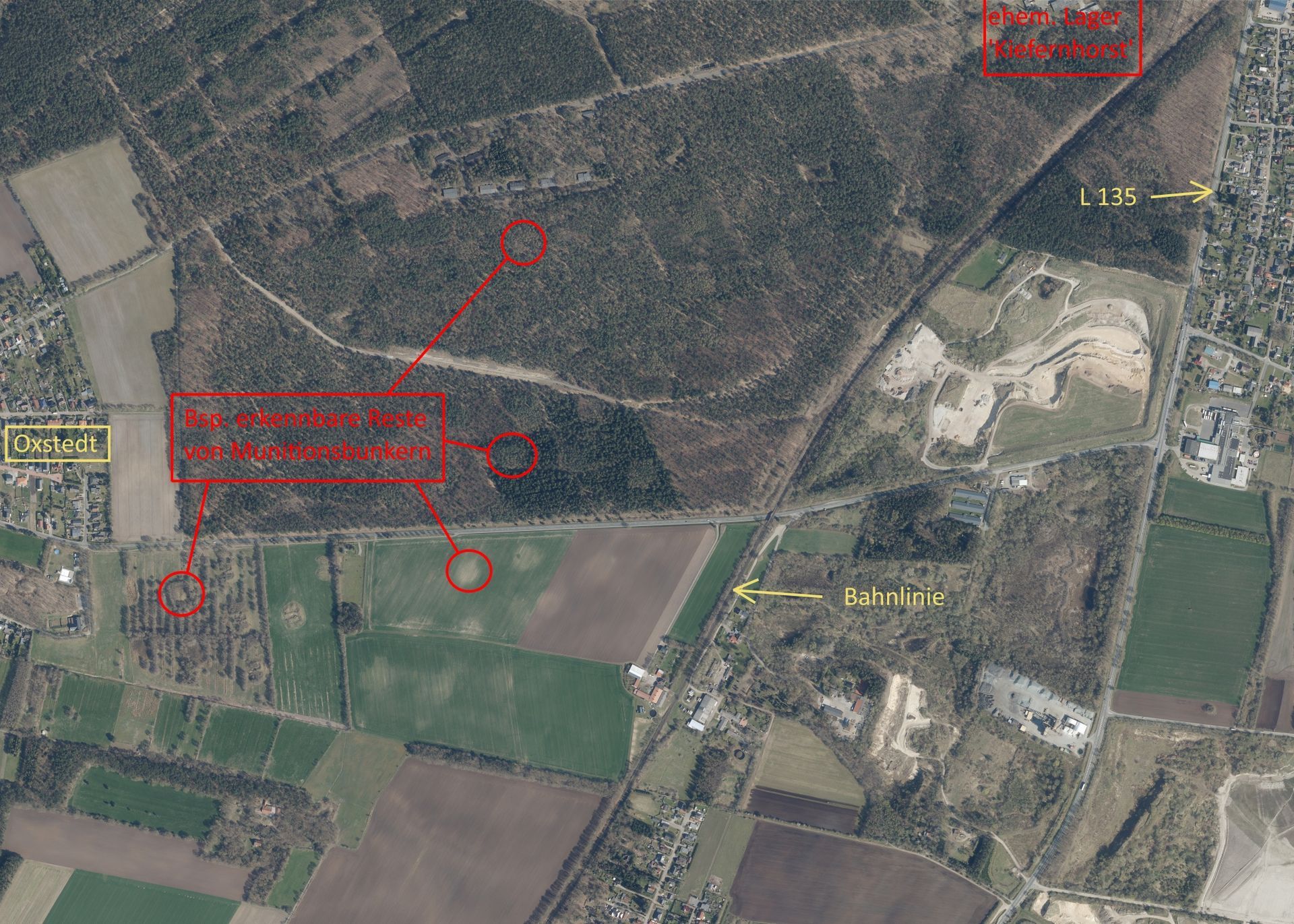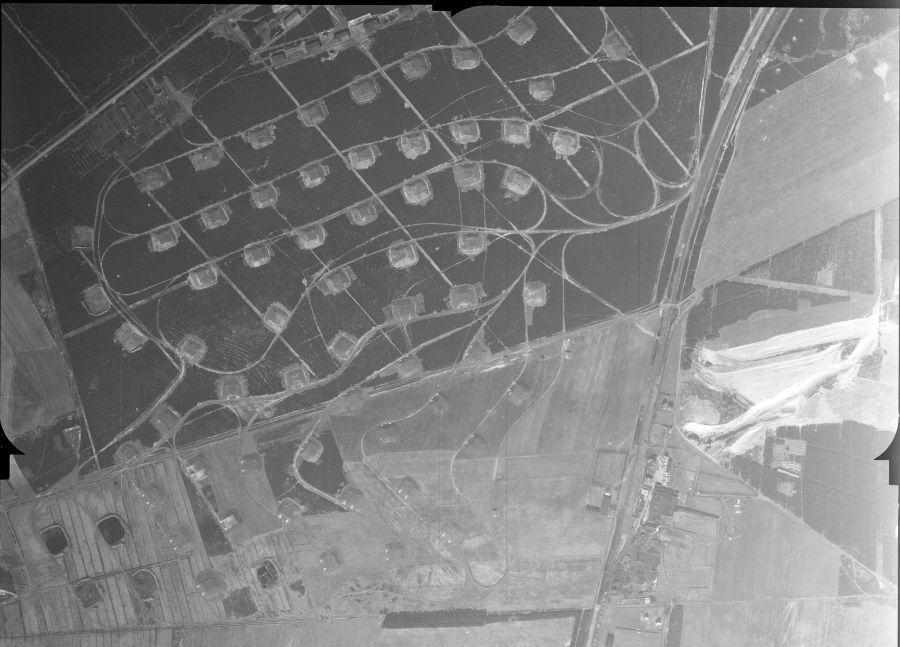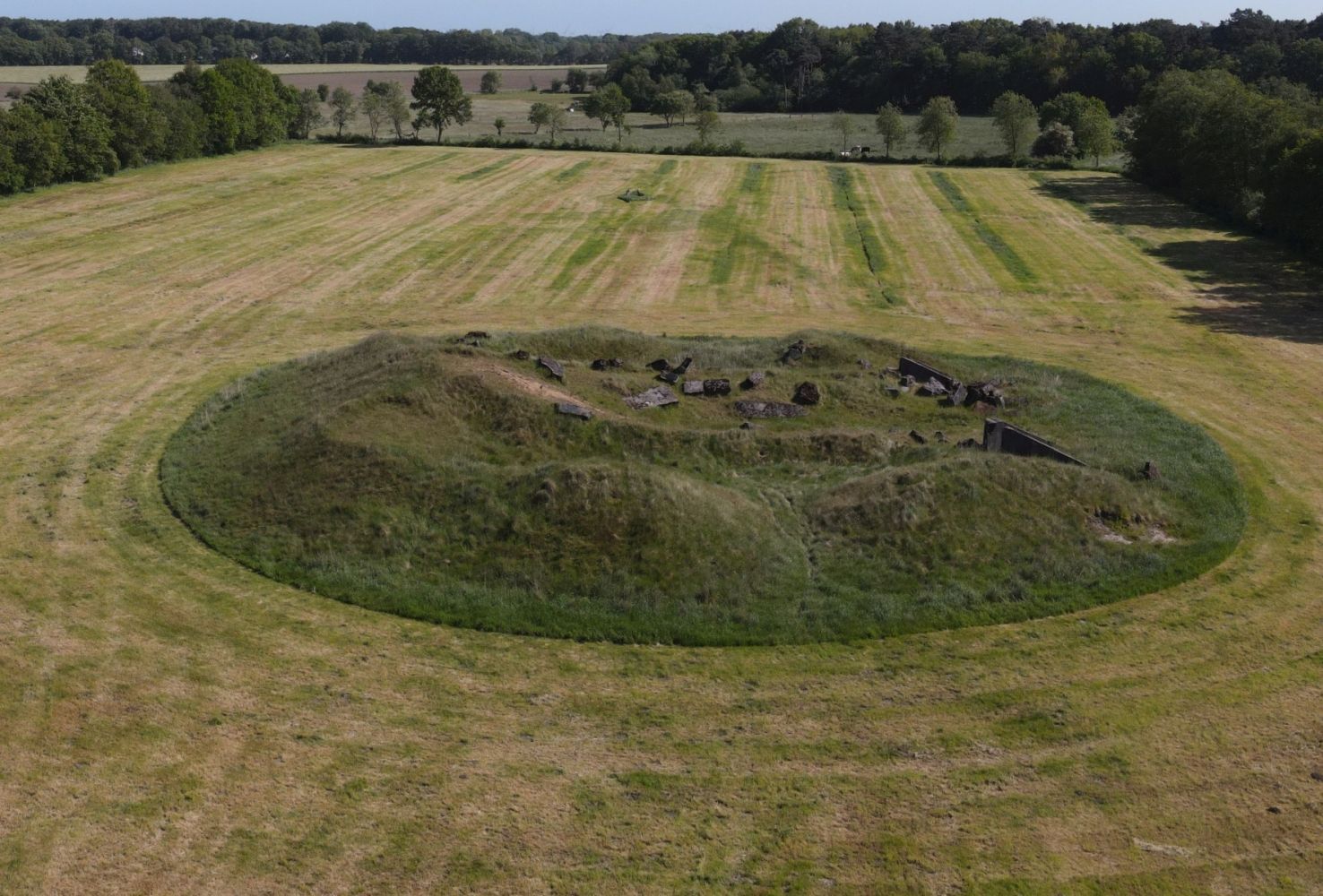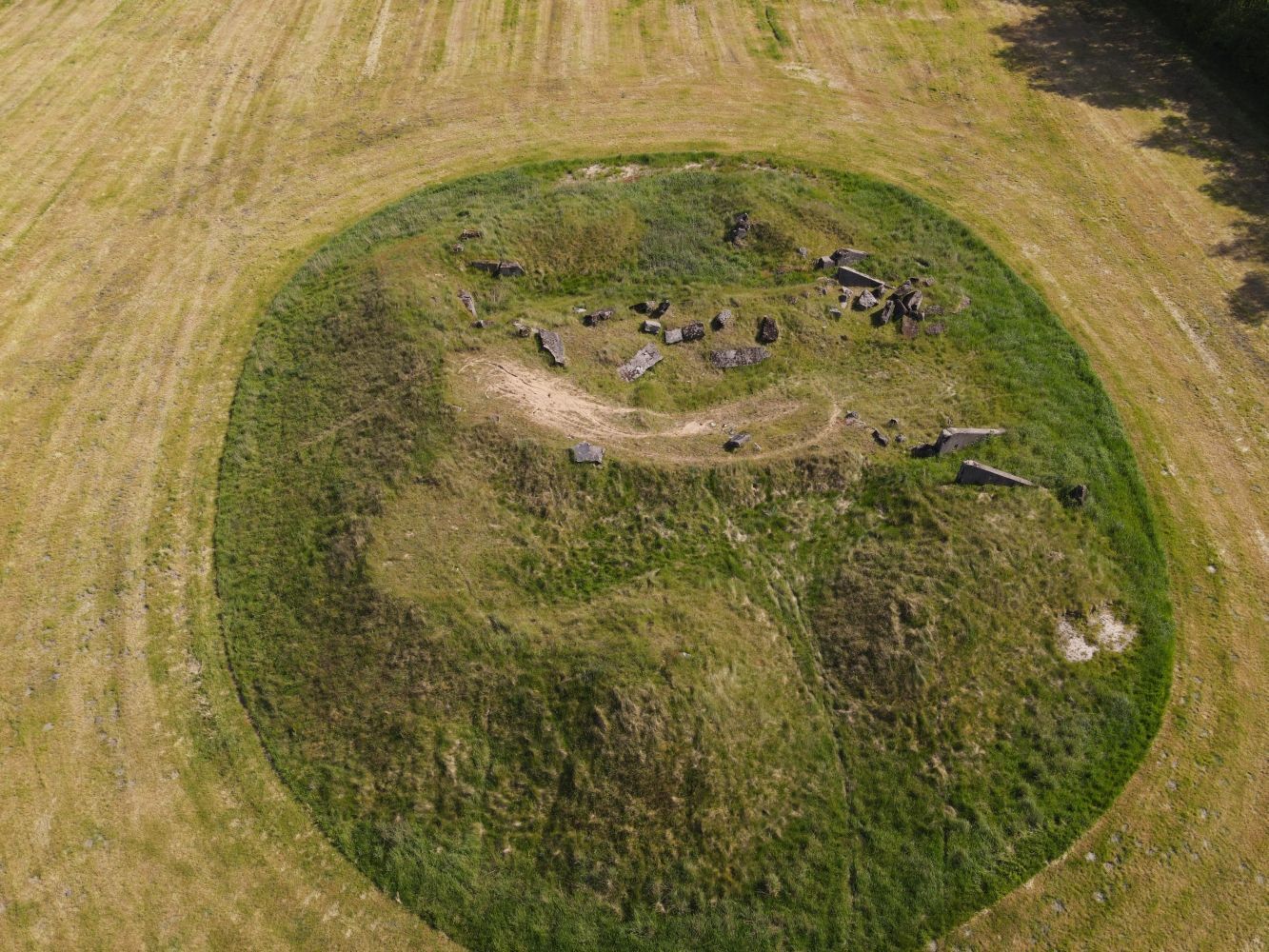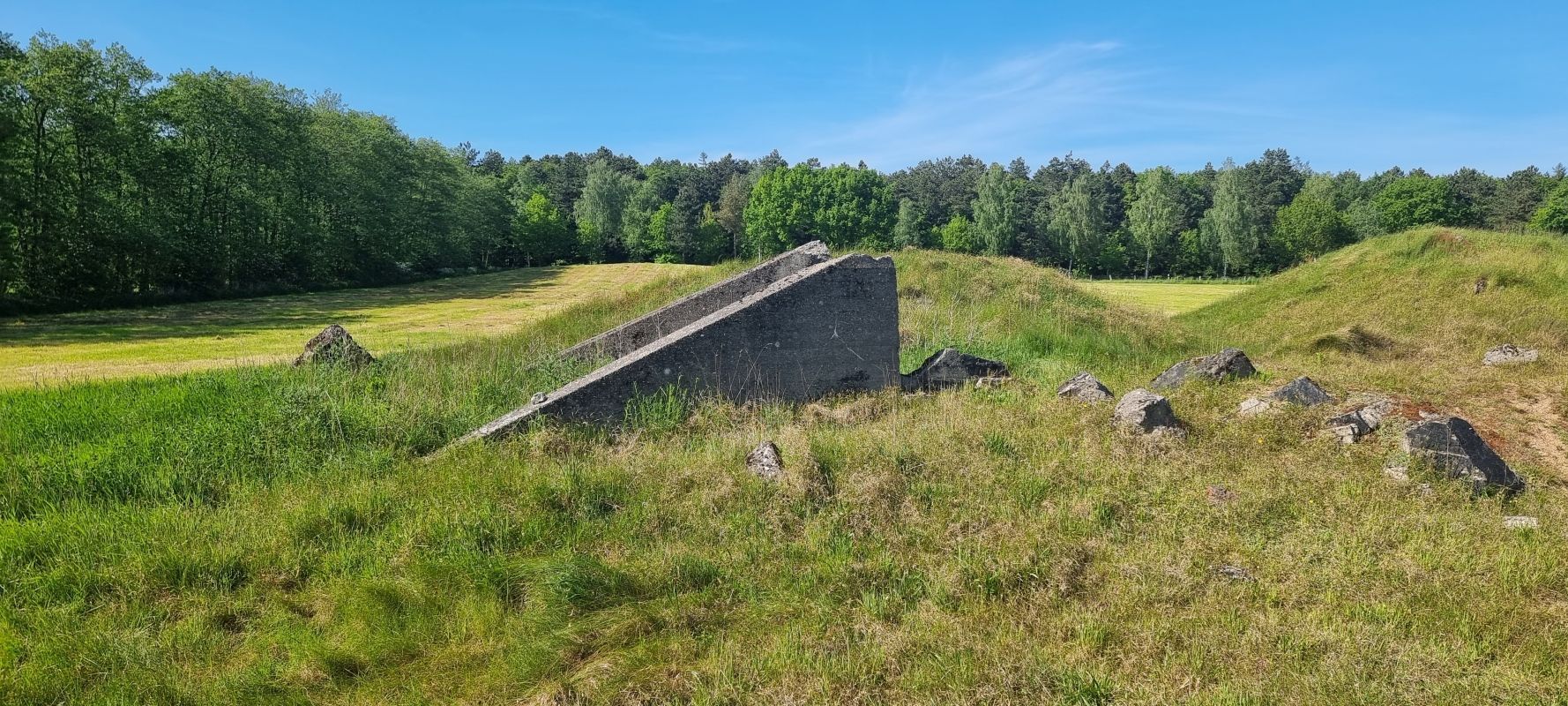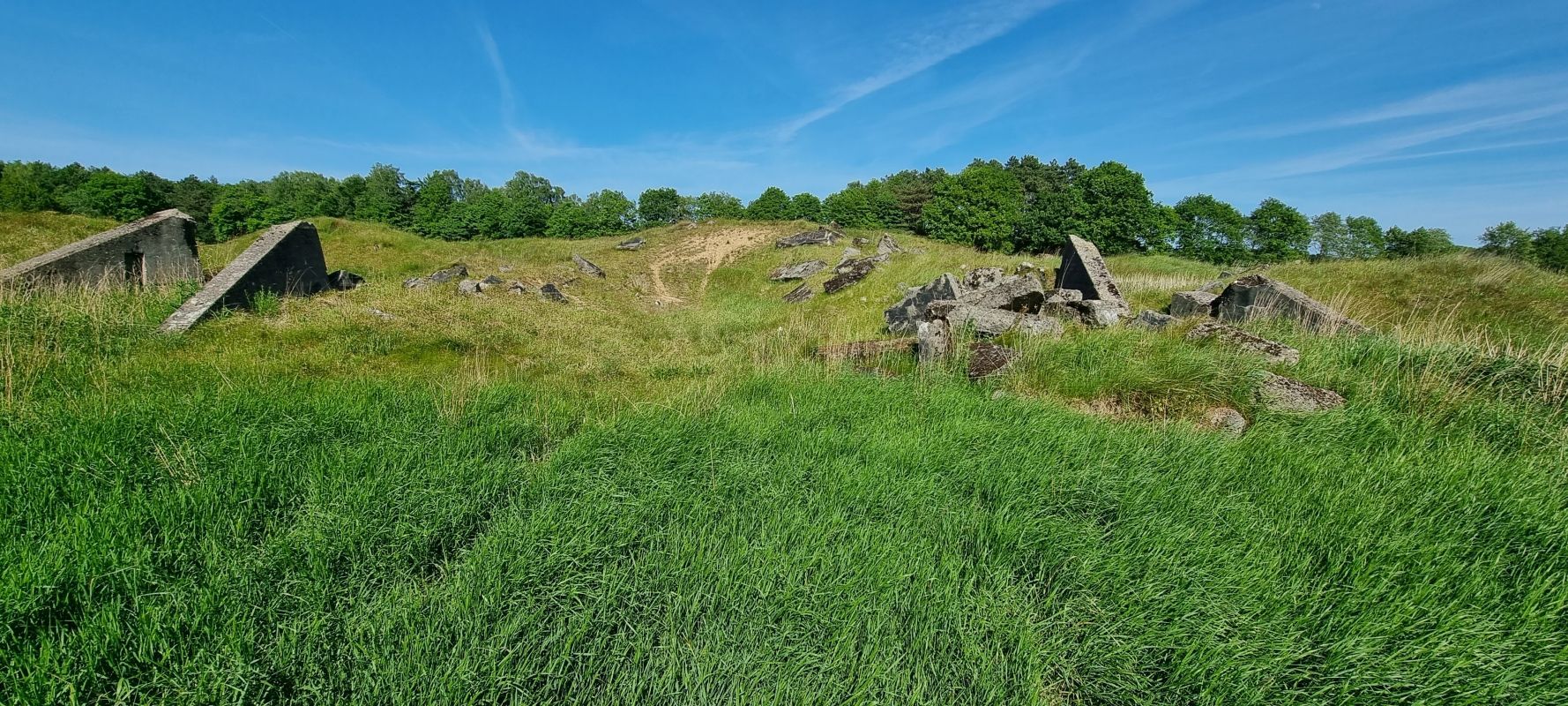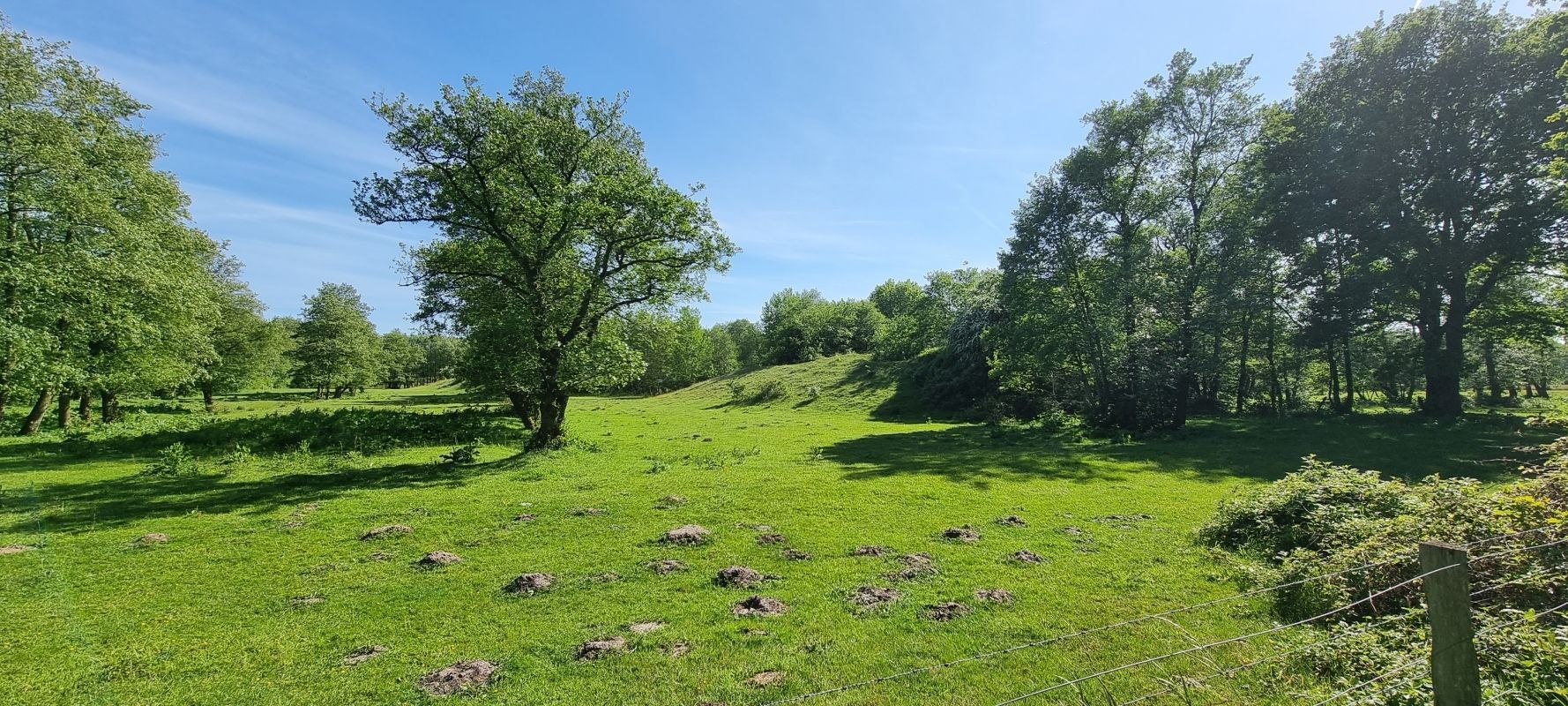
With the start of the Third Reich's rearmament, planning for the Oxstedt naval arsenal began in 1935. Since the mine depot in Groden, which had been built in 1808, had already reached its capacity limit by this time, the decision was made to move the site to what is now the 'Am Möhlendiek' road. The area was located in what was then Oxstedter Heide on the eastern edge of the town and on the southern border of the naval firing range - Altenwalde. The facility began operations in 1940, and its task was to equip and complete mines based on contact and magneto detonators. For this purpose, a bunker system consisting of a total of 53 mostly earth-covered double bunkers was built east of Oxstedt. The production area essentially consisted of a production line with 6 buildings (2 ammunition houses, 2 mine houses, 2 accessory houses). To the north of these were locomotive sheds, garages, transformer station, etc. The administration building at that time was located directly south of the Altenwalde-Oxstedt road.
During the course of World War II, it became apparent that the expansion to a production facility was no longer necessary, as existing capacities were already sufficient. The numerous ammunition bunkers were now to be used exclusively for the storage of mines. For this purpose, the facility in Oxstedt was assigned to the Cuxhaven-Groden bulk weapons arsenal as an external storage facility. In July 1943, the name of these facilities was changed from bulk weapons office to bulk weapons arsenal. In addition, corresponding ammunition was also stored for the nearby Luftwaffe air base in Nordholz. Another advantage of the location was the direct connection to the Reichsbahn rail network, with a corresponding loading ramp on which goods could be transferred directly from the depot wagons to the standard gauge freight wagons. The extensive narrow-gauge field railway network reached all of the ammunition bunkers and was connected to each other, to the production and supply areas, and to the Altenwalde shooting range. In order to transport the large and heavy mines safely, it was best to deliver them by rail right up to the warehouse gates. This meant that there were significantly more rail lines than roads in the barrage of weapons, a construction method that was common in such depots.
During the construction of the barrage of weapons between 1935 and 1940, the area that had previously only been covered with heather was reforested with black pine trees. This was intended to provide better camouflage for the facility.
There have been no reports of the facility being destroyed by air raids, although there were occasional low-level attacks, all of which were successfully repelled. The naval interdiction weapons arsenal thus remained largely intact at the end of the war and could be handed over to the British occupying forces without the risk of unexploded bombs. The ammunition leftovers of all kinds in the bunkers were later taken to Cuxhaven and then by ship to Heligoland. This was used to blow up the island's military bunkers in 1947 (Big Bang). In 1948, the facility in Oxstedt was demilitarized and the individual ammunition depots blown up. Some of the mounds of the former bunkers can still be found on both sides of the 'Am Möhlendiek' road, which was only built after the war. According to reports from contemporary witnesses, after the war, Wehrmacht equipment that had remained in the northern part, as well as at the Nordholz air base, including guns, was disposed of in large holes and covered with earth.
The so-called 'Heidelager' was set up on the northern edge of the site. It was a work camp that housed workers and servants, but also forced and foreign workers. At times it housed up to 2,000 people. After the end of the war, only the residential area known as the 'Kiefernhorst settlement' remained, and later served as accommodation for displaced persons and refugees.
From 1963 onwards, the Bundeswehr took over the area north of the "Möhlendiek" again and operated the Marine Ammunition Depot 6 Oxstedt here.
Mitte 2023 waren noch alle beschriebenen Gebäude des Fertigungsbereiches vorhanden und mit einem Zaun aus Zeiten der Nutzung durch die Bundeswehr versehen. Es ist allerdings geplant, sämtliche Hallen, Straßen und weiterer noch vorhandener Objekte zu entsiegeln. Grund dafür sind diverse Bauarbeiten auf dem Marinefliegerhorst Nordholz der Bundeswehr, für die diese Kompensationsmaßnahmen vorgesehen sind.
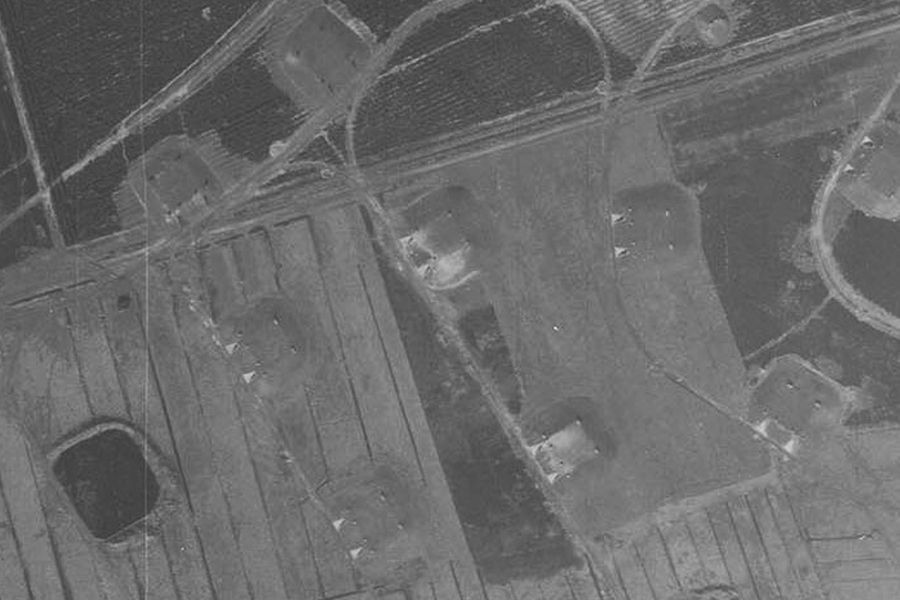
The bunkers in close-up, the path above is now the street "Am Möhlendiek". Photo taken in 03-1945.
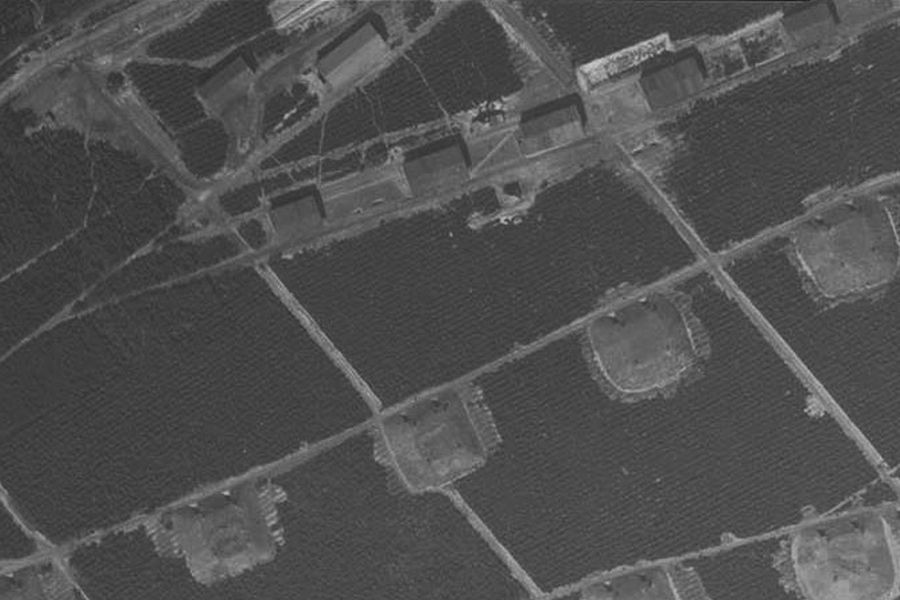
The production buildings for sea mines, including the first ammunition bunkers. Photo taken in March 1945.
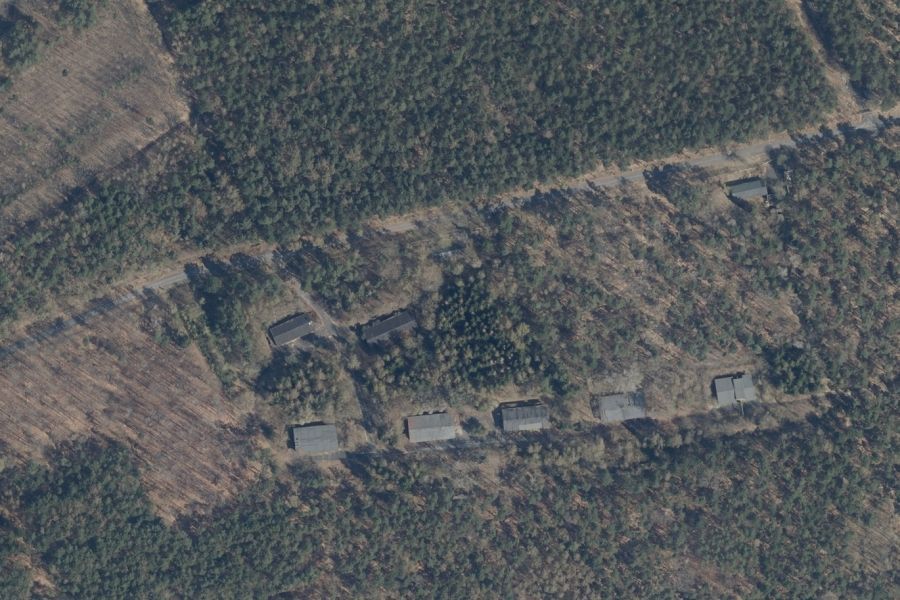
The halls of the production area for sea mines that will still exist in 2023. They were built in 1944 and are to be demolished in the near future as part of a compensation measure.

One of the narrow-gauge railways after the end of the war at the Altenwalde shooting range. The rail network ran from here to the area of the Oxstedt naval munitions arsenal.
The area of the former ammunition depot west of the street "Am Möhlendiek" today

Die Reste eines gesprengten Doppel-Munitionsbunkers auf der Südseite der Straße "Am Möhlendiek".
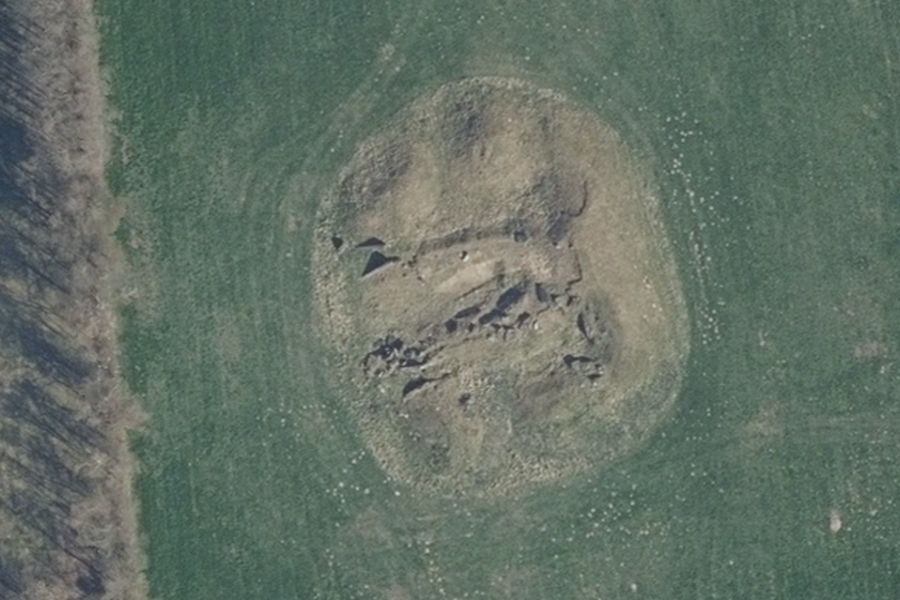
The individual ammunition bunkers were covered with a thick layer of earth for additional protection. After the facility was blown up by the British occupying forces as a result of demilitarization, the concrete remains were later disposed of or pushed together with the excavated material to form hills. This is particularly the case in the forest area on the northeast side of the road and is easy to see. On the opposite side, the bunkers were mostly completely removed and the covering spread out; these areas are now being cultivated again. In some places, however, the bunkers remained exactly as they were when they were blown up (see photos below).
Source: Relikte.com, Gerd Wildfang, MB.



